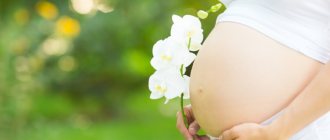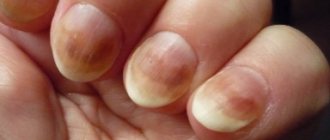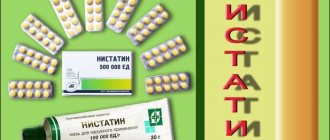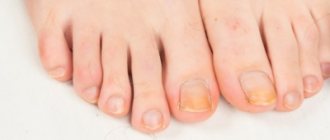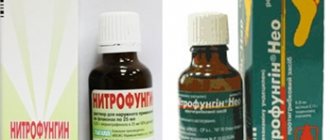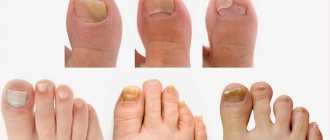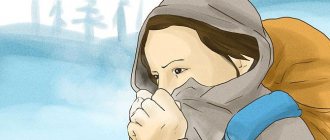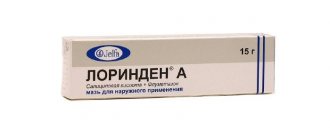Causes and mechanism of development
Onychomycosis progresses due to the penetration of the fungus into the structure of the nail plate. There it begins to actively multiply, leading to the destruction of the affected nail. You can become infected with fungal pathology through contact with a sick person or when visiting public places.
Often pathogenic microorganisms penetrate the patient’s nail when he visits baths, saunas, swimming pools, and beaches. There is also a high risk of infection when using shoes or a towel of a patient. There is not always a chance that an infection will occur. Typically, people with weak immune systems are more susceptible to the development of fungal pathology.
Factors that contribute to the occurrence of onychomycosis include tight shoes, increased sweating, poor personal foot hygiene, foot injuries, and diabetes.
Folk remedies for the treatment of onychomycosis
Folk remedies include the use of masks and lotions for nails, as well as the ingestion of tinctures and decoctions. Treatment of onychomycosis with folk remedies must be continued for 6-12 months.
The following recipes are used:
- Rub garlic or hot pepper into the steamed nail.
- Take 1 tsp. calamus root and pour 100 ml of boiling water. Boil for 5 minutes, cool and strain. Take the decoction throughout the day. Taking calamus root decoction must be agreed with your doctor - this medicinal plant has many contraindications.
- Apply a mixture of crushed garlic and butter (1:1) every evening to the affected nails, wrap in cellophane and put on socks or gloves. In the morning, rinse with water.
- Mix golden mustache tincture (4:1) with water and apply baths or lotions to affected nails.
- Steam your nails in hot water with the addition of 1-2 drops of iodine or 1 crystal of potassium permanganate and apply kombucha. Apply this compress at night and put socks on your feet.
- Sea or table salt baths help eliminate microorganisms, restore cells and moisturize the skin.
Symptoms
There are several types of fungi that affect toenails. Each variety is characterized by its own clinical picture. The intensity of manifestations also depends on the stage of development of the pathology. But there are several signs that are characteristic of all types of onychomycosis:
- The development of an inflammatory process in the skin surrounding the nail.
- Destruction and thickening of the nail plate.
- Changing the shade of the surface.
- Dying of the affected area.
The disease most often develops first on the big toe, after which it gradually spreads to other nails, as well as to the outer integument.
Symptoms of onychomycosis
The severity of symptoms of onychomycosis is determined by the stage of the disease and the location of the lesion.
The characteristic signs of onychomycosis are as follows:
- white or yellow spots appear on the nail;
- inflammation and peeling of the skin around the nail;
- the nail becomes deformed and separates from the bed.
You can check the diagnosis of onychomycosis by submitting the nail material for examination. A confirmed diagnosis requires immediate treatment, the absence of which can lead to loss of nails.
Diagnostics
The examination begins with a medical examination. The doctor evaluates the external signs of pathology, studies the patient’s symptoms and medical history. But even visually, based on thickness, color and other parameters, it is impossible to accurately determine whether the pathology is of a fungal nature. This requires special tests.
During diagnosis, the doctor must distinguish onychomycosis from the following diseases: psoriasis;
- psoriasis;
- keratoderma;
- lichen;
- insufficient provision of nails with useful components.
When a fungus is detected, a microscopic examination must be performed. To do this, the laboratory takes a scraping from the nail plate and treats it with a special substance for further study under a microscope. This method has one significant drawback - the inability to determine the type of mold.
To make a final diagnosis, a culture test is prescribed. During this process, the material obtained from scraping is sent to a special nutrient medium to monitor the development of pathogenic microorganisms. Due to the slow growth of fungi, examination results are obtained no earlier than after 5 days.
This method helps to accurately determine the type of pathogen. The parameter is determined by the shape, growth pattern and shade of the bacteria. The doctor also has the opportunity to assess what types of drugs the identified fungus is sensitive to, so that the most effective treatment regimen for the pathology is selected.
Scientists are actively looking for a way to identify a fungal disease using its DNA. Similar studies are already being conducted. It turns out to detect dermatophytes and yeast fungi using this method. The advantage of DNA diagnostics is its high accuracy and efficiency.
External therapy for advanced onychomycosis
Treatment of advanced onychomycosis using antimycotic drugs should be carried out in combination with external therapy, consisting of 2 stages. At the 1st stage, the affected nail or part of it is removed mechanically or using keratolytic patches. During mechanical removal, the affected nail plates are filed or cut off with pliers. Keratolytic patches help soften the nail so that it can be painlessly removed using regular scissors.
At the 2nd stage, the nail bed and growing nail plate are treated. For this purpose, you can use Mycospor cream for 4-6 weeks. The drug is intended for simultaneous removal of the nail and the destruction of pathogenic fungi. Effective means of local therapy for onychomycosis are the drugs “Loceril” and “Batrafen”, which are available in the form of nail polishes. These products can be applied to the nail plates without removing them. Effective concentrations remain for 7 days, so the drugs can be used 1-2 times a day. in Week. During the treatment period and after it, it is necessary to repeatedly treat shoes with disinfectants, which include: Borozin powder, Daktarin spray powder, 10% Formalin solution, 0.5% Chlorhexidine solution. and etc.
Treatment
The fight against onychomycosis involves implementing a set of measures aimed at destroying the fungal infection and accelerating the growth of the new plate. Therapy uses medications, physiotherapy, and surgery. Treatment tactics are selected based on the degree of development of the disease.
Medicines
To get rid of nail fungus, doctors prescribe topical or oral medications. The choice depends on the stage of the pathology. Local ones are more suitable for early stages, and tablets help with advanced disease.
Drugs for onychomycosis
Drugs for the treatment of onychomycosis affect the fungal enzymes responsible for sterol biosynthesis.
The use of antimycotics sometimes leads to adverse reactions:
- nausea;
- diarrhea;
- allergy;
- headache;
- change in taste sensations.
You cannot reduce the dose or shorten the course without the knowledge of the attending physician, who sometimes replaces the drug or changes the dosage regimen.
Griseofulvin
Griseofulvin is the first antimycotic used to treat onychomycosis. In the first month, the drug is prescribed at 750-1000 mg per day, in the second - at the same dose every other day, then, until healthy nails grow back, 2 times a week. Griseofulvin is taken in 3 doses with a teaspoon of vegetable oil. The frequency of side effects, as well as the likelihood of relapses, limit the use of the drug.
Terbinafine
Terbinafine inhibits the proliferation of fungi and leads to premature death of fungi. As a rule, Terbinafine is prescribed 250 mg daily for 40-80 days, trade names:
- Binafin;
- Bramisil;
- Lamisil;
- Onyhon;
- Terbizil.
Fluconazole
For severe fungal infections, a parallel dose of Fluconazole is prescribed once a week, 150 ml, trade names:
- Vero-fluconazole;
- Difluzol;
- Diflucan;
- Procanazole
Introconazole
Introconazole is prescribed 200 mg per day for 90 consecutive days. Another dosage regimen (pulse therapy) is 200 mg in the morning and evening for a week, after which 2 repeated courses are given every 3 weeks. Trade names:
- Itramikol;
- Itrazole;
- Kanazol;
- Orungal;
- Orungamin.
Ketoconazole
Ketoconazole is taken 200 mg (1 tablet) per day with meals. The duration of treatment for damage to fingernails is 4–6 months, toenails are 8–12 months.
Complications
White superficial or other type of onychomycosis requires mandatory treatment, and the sooner the better.
If you start a pathological process, then there is a high risk of complications.
Fungal infection can aggravate the course of concomitant diseases of the body. There is also a chance that the infection will spread to the skin and nail bed, which will lead to an increase in the area of infection and additional unpleasant symptoms. If onychomycosis is not cured, after a while the nail will collapse and its appearance will deteriorate. An aesthetic defect often negatively affects the psycho-emotional state of the patient.
Atrophic onychomycosis
This type is accompanied by atrophy of the nail plate and its separation from the skin. In this place it is covered with brown, loose layers. This is the most severe type of fungal infection, which requires serious treatment under the supervision of a doctor. It’s too late to figure out for yourself what it is and how it’s treated. Qualified medical assistance is required. Distal and lateral (subungual) onychomycosis The causative agent of this infection is the fungus Trichophyton red. Damage to the nail plates begins with the entry of infected skin flakes from the feet. At the initial stage, the free edge changes. Then a yellow spot appears on the surface of the nail plate. The person feels itchy. The tissues acquire a brown tint and become swollen. The nail plate begins to crumble and moves away from the nail bed. The skin underneath hardens and becomes covered with dry plates.
Prevention
To prevent the development of nail fungus on the hands and feet, you need to follow a number of simple but effective recommendations:
- Trim nail plates in a timely manner.
- Fight excessive sweating.
- Avoid damaging nails and skin.
- Wash your lower extremities daily.
- Follow sanitary rules when performing a pedicure.
- Wear rubber slippers when visiting a public shower, swimming pool, bathhouse, sauna.
- Use special antibacterial varnishes.
Onychomycosis of the fingers and toes is a serious disease accompanied by unpleasant symptoms. The pathology leads to destruction of the nail plate and therefore requires immediate treatment.
Prevention of nail fungus
You can prevent fungal infections by following these rules:
- Avoid tight, closed shoes, especially in summer.
- Do not wear or try on someone else's shoes.
- Use personal special shoes in swimming pools and baths.
- Observe hygiene rules.
These medical instructions must be strictly followed, then the likelihood of contracting a fungal infection will tend to zero. It is important to examine the skin of your feet and hands at least once a month. If there is the slightest change in shape or color, contact a dermatologist. In this article we tried to collect complete information about fungal infection. If you have additional information and have personal experience in treating fungal infections, write about it in the comments. Take care of the health of your friends and loved ones, share this article with them on social networks.
Types of therapeutic measures
To successfully cure nail onychomycosis, a number of drugs have been developed that can be classified into two large groups:
- local medications;
- systemic medications.
The first group of medicines consists of various types and compositions of ointments, creams, gels, drops (i.e. solutions for external use), sprays, varnishes, which are applied directly to nails modified by the fungus. Local therapy is the “easiest”: substances do not enter the general bloodstream, therefore, they do not undergo the stages of enzyme metabolism in the liver and do not cause pronounced side effects, such as stool disorders in the form of constipation or diarrhea, headache, sleep rhythm disturbances, etc. Systemic agents are administered orally (“by mouth” in tablets or capsules) or parenterally (intravenously in the form of infusions). Accordingly, they are directly related to active hepatic metabolism and may contribute to more pronounced side effects. It is worth noting that local therapy is characterized by the risk of “local side effects”: burning, rash or redness of the skin at the site of application of the medicine.
The composition of one or another local, systemic drug contains a certain active substance - the basis of the therapeutic effect. This is an antifungal substance (antimycotic), which belongs to the Register of Medicines of the Russian Federation. A single antifungal substance may be sold under different trade names. For example, Bifonazole is known under the names “Mikospor”, “Bifosin”, “Bifasam”. At the same time, various trade names may hide a number of release forms: for example, the substance will be available to patients in the form of ointments, tablets and gel.
The antifungal effect of all drugs is ensured by two directions of drug activity:
- Bactericidal effect - complete destruction of fungal cells by disrupting the formation of lipids and carbohydrates from their cell membrane.
- A bacteriostatic effect, which seems to “inhibit” or “suspend” the vital activity of microorganisms.
In addition to drug treatment, separate methods have been identified for mechanical removal of masses modified by the fungus, used only when indicated:
- Surgical removal of the nail under local anesthesia by separating it from the bed with scissors and nippers.
- Removing the nail layer by layer using specialized cutters.
- Laser “burning out” of infected areas without affecting healthy nail structures.
Traditional methods of treating fungus
Alternative medicine may only be effective in the early stages of the disease. Most often, recipes based on alcohol tincture of iodine are used. This product has an antiseptic, drying and healing effect. In addition, the substance destroys the protein components of the fungus, quickly destroying it. A drop of a 5% solution is applied to the affected areas 2 times a day for a month. The result can be seen within a week. A burning sensation appears, indicating the effectiveness of the treatment. If there is severe pain, treatment is recommended once a day. Iodine can be used for preventive purposes; it is applied once every 2 days. The product should not get on surrounding tissues.
The drug may cause allergic reactions associated with individual intolerance to the active substance. In this case, treatment is stopped. Vinegar-based products are considered no less effective. It is mixed with water in a ratio of 1:8 and used for foot baths. After steaming the nails, remove all softened parts. The procedure is carried out 7 times a day, the course of treatment lasts a week.
Kombucha has antimycotic and anti-inflammatory properties. It is used in the form of compresses. A piece of mushroom is cleared of film, applied to the affected areas and secured with a bandage. The procedure is carried out before going to bed, and in the morning you rinse your feet with warm water. The destroyed parts of the plate are removed, the remaining parts are treated with iodine. Lavender essential oil can be used to treat onychomycosis. It is mixed with olive oil and applied to nails and skin at night.

